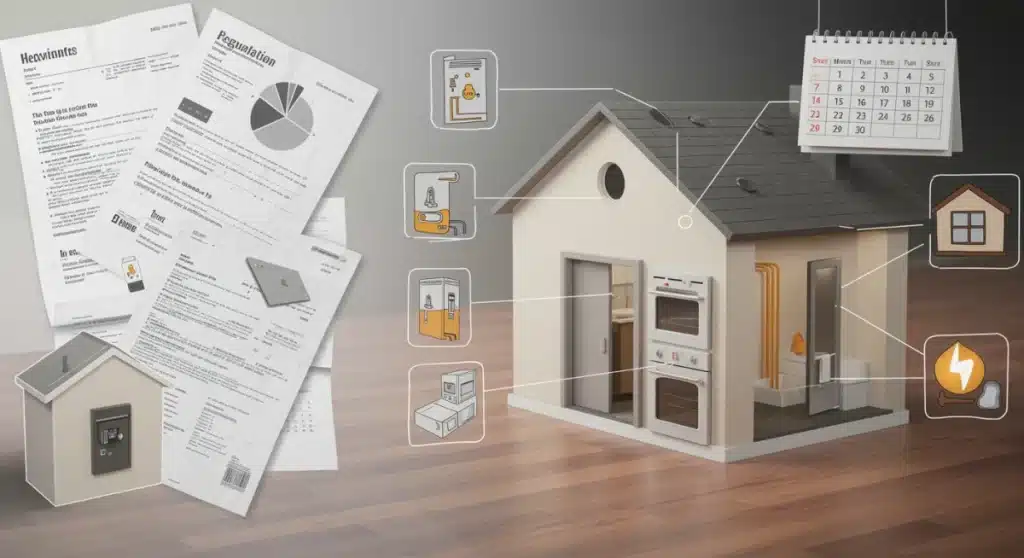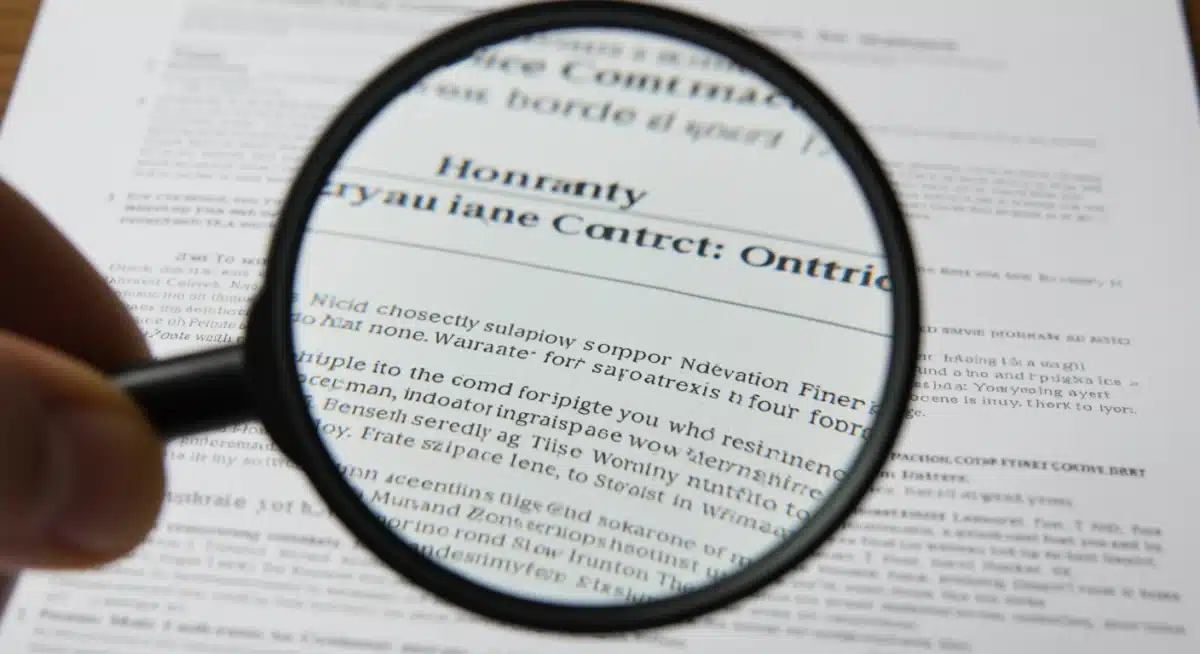Home Warranty Regulations 2025: What Consumers Need to Know

Latest developments on Home Warranty Regulations 2025 with key facts, verified sources, and what readers need to monitor next in Estados Unidos, presented clearly in Inglês (Estados Unidos) (en-US).
Recent Changes to Home Warranty Regulations: What Consumers Need to Know for 2025 is shaping today’s agenda with new details emerging from officials and industry sources. This update prioritizes what changed, why it matters, and what to watch next, in a clear news format.
The landscape of home warranties in the United States is undergoing significant transformation, with new regulations set to take effect in 2025. These changes aim to enhance consumer protection, increase transparency, and standardize service delivery across the industry. For homeowners and prospective buyers, understanding these updates is not just beneficial but essential to navigating their coverage effectively and safeguarding their investments. This report delves into the core of these regulatory shifts, offering a clear, immediate perspective on what you need to know now.
Understanding the Core Regulatory Shifts for 2025
The upcoming Home Warranty Regulations 2025 represent a concerted effort by federal and state authorities to address long-standing concerns within the home warranty industry. These concerns often revolved around opaque contract terms, inconsistent service standards, and challenges in dispute resolution. The new framework seeks to establish a more equitable playing field, ensuring that consumers receive the value and protection they expect from their home warranty plans.
Authorities across various states, often in conjunction with federal guidelines, have confirmed new timelines and outlined initial impacts. Statements from key stakeholders, including consumer advocacy groups and leading home warranty providers, indicate a proactive approach to implementing these changes, signaling both short-term adjustments and a clearer pathway for future compliance and consumer education.
Key Areas of Regulatory Focus
- Increased Transparency: New rules mandate clearer language in contracts, making it easier for consumers to understand what is covered, what is excluded, and the specific terms of service.
- Standardized Service Levels: Regulations aim to establish minimum standards for response times, repair quality, and technician qualifications, reducing disparities in service quality.
- Enhanced Dispute Resolution: New mechanisms are being introduced to streamline the process for resolving disagreements between homeowners and warranty providers, offering more accessible and fair avenues for recourse.
- Financial Solvency Requirements: Stricter financial oversight for warranty companies is being implemented to ensure they have the capital to fulfill their obligations, protecting consumers from companies that might default on claims.
These regulatory shifts are not merely bureaucratic adjustments; they are designed to fundamentally alter the consumer experience, moving towards a model where clarity and accountability are paramount. The goal is to empower homeowners with knowledge and stronger protections, mitigating common frustrations and misunderstandings that have historically plagued the home warranty sector.
Impact on Coverage and Policy Terms
The Home Warranty Regulations 2025 are poised to significantly influence the scope and specifics of home warranty coverage. Homeowners should anticipate a review of their existing policies and a careful examination of any new contracts to ensure full understanding of the updated terms. These changes are designed to close loopholes and ensure that the coverage promised is indeed the coverage delivered.
One of the most immediate impacts will be on the clarity of policy terms. Vague language and fine print that previously obscured limitations or exclusions are being targeted for reform. This means that descriptions of covered systems and appliances, as well as the conditions under which repairs or replacements are authorized, will need to be explicitly detailed in an easily understandable format.
What to Expect in Your Policy
- Detailed Coverage Descriptions: Policies will feature more explicit lists of covered items and their components, leaving less room for interpretation.
- Clear Exclusion Clauses: Any items or situations not covered by the warranty must be highlighted clearly, preventing surprises when filing a claim.
- Service Call Fee Transparency: The exact amount and conditions for service call fees will be prominently displayed, removing ambiguity about out-of-pocket costs.
- Deductible and Payout Limit Clarification: Information regarding deductibles, aggregate payout limits, and per-item limits will be presented in a straightforward manner, ensuring consumers know their maximum financial exposure.
Moreover, some regulations may introduce minimum coverage requirements, ensuring that basic essential home systems and appliances are included in standard plans. This proactive approach aims to prevent scenarios where homeowners purchase what they believe to be comprehensive coverage, only to find critical items are excluded. Staying informed about these policy term adjustments is critical for all home warranty holders.

Enhanced Consumer Rights and Protections
A cornerstone of the Home Warranty Regulations 2025 is the substantial reinforcement of consumer rights. These enhanced protections are a direct response to past grievances and are intended to provide homeowners with greater leverage and security when dealing with their home warranty providers. The focus is on creating a more balanced relationship, where the consumer’s interests are explicitly safeguarded.
New mandates will empower consumers with more transparent access to information, from the initial contract signing through the claims process. This includes the right to receive timely updates on claim status, clear explanations for claim denials, and access to an impartial review process for disputes. These measures are designed to reduce frustration and ensure fair treatment throughout the warranty lifecycle.
Key Consumer Protections
- Right to Informed Consent: Consumers must be fully aware of all terms and conditions before purchasing a policy, with providers required to present information in an accessible format.
- Timely Claims Processing: Regulations may set maximum timeframes for warranty companies to acknowledge, process, and resolve claims, preventing undue delays.
- Fair Denials and Appeals: If a claim is denied, providers must offer a clear, detailed explanation and provide a transparent process for appealing the decision.
- Access to Qualified Technicians: Homeowners gain assurances that repairs will be carried out by licensed and qualified professionals, ensuring quality workmanship.
These protections extend beyond just the claims process, touching upon the initial sales interaction and the ongoing relationship between the homeowner and the warranty provider. The aim is to build trust and accountability, ensuring that homeowners feel confident in their coverage and have clear avenues for recourse should issues arise. Understanding these rights is paramount for any consumer.
Navigating the Claims Process Under New Rules
The claims process, often a source of contention and confusion for homeowners, is a primary target for improvement under the Home Warranty Regulations 2025. These new rules are designed to streamline the process, reduce ambiguities, and ensure that claims are handled efficiently and fairly. For consumers, this translates into a potentially smoother experience when a covered system or appliance fails.
Expect to see more standardized procedures for initiating a claim, including clear instructions on what information is required and how to submit it. Warranty providers will likely be mandated to communicate more effectively, providing regular updates on claim status and clarifying any questions or concerns a homeowner might have throughout the process. The goal is to minimize the guesswork and anxiety often associated with filing a claim.
Streamlined Claims Procedures
- Clear Submission Guidelines: Providers must offer straightforward instructions for submitting claims, including preferred methods (online, phone, email).
- Defined Response Times: New regulations may set specific timeframes within which a provider must acknowledge a claim and dispatch a service technician.
- Transparent Communication: Companies will be required to maintain open lines of communication, informing homeowners of each step in the claims process, from diagnosis to repair or replacement.
- Objective Denial Criteria: Any denial of a claim must be based on clearly articulated policy terms and supported by objective evidence, rather than subjective interpretations.
Furthermore, the introduction of enhanced dispute resolution mechanisms means that if a claim is denied, homeowners will have more robust options for challenging that decision. This could include access to independent arbitrators or state consumer protection agencies specifically tasked with overseeing home warranty disputes. Preparing for these new procedures will empower homeowners to navigate the claims process with greater confidence.
What Homeowners Need to Do Now and in 2025
With the Home Warranty Regulations 2025 on the horizon, proactive engagement from homeowners is crucial. Simply waiting for the changes to unfold might leave you unprepared to fully leverage the new protections or adapt to revised policy terms. Taking specific steps now can ensure you are well-positioned to benefit from the upcoming regulatory environment.
First and foremost, homeowners should review their current home warranty policies. Understand the existing coverage, limitations, and the claims process as it stands today. This baseline knowledge will be invaluable when comparing existing policies to the new standards or when considering renewing or purchasing a new warranty plan in 2025.
Actionable Steps for Homeowners
- Review Current Policy: Carefully read your existing home warranty contract to understand current terms, exclusions, and the claims procedure.
- Stay Informed: Monitor official announcements from state insurance departments, consumer protection agencies, and reputable industry sources regarding the specific implementation details of the 2025 regulations in your state.
- Compare Providers: As 2025 approaches, research different home warranty companies to see how they are adapting their policies and services to comply with the new regulations.
- Ask Questions: Don’t hesitate to contact your current or prospective home warranty provider with questions about how the new regulations will impact your specific coverage.
Beyond reviewing policies, it is also advisable to maintain thorough records of all home repairs, maintenance, and communications with your home warranty company. This documentation can be critical if you need to file a claim or dispute a decision under the new regulatory framework. Being prepared means being informed and organized.

Future Outlook and Long-Term Implications
The Home Warranty Regulations 2025 are not merely a one-time adjustment but are expected to usher in a new era of accountability and consumer focus within the home warranty industry. The long-term implications are significant, potentially reshaping how home warranty services are marketed, delivered, and perceived by the public. This regulatory shift could lead to increased consumer confidence and a more stable market.
In the long run, these regulations are anticipated to foster a more competitive and transparent market. Companies that prioritize consumer satisfaction and adhere strictly to the new guidelines are likely to thrive, while those that resist compliance may face significant challenges. This competitive pressure could ultimately lead to better products and services for homeowners across the board.
Anticipated Long-Term Effects
- Increased Market Trust: Greater transparency and stronger protections are expected to boost consumer trust in home warranty products, potentially increasing market penetration.
- Innovation in Services: Companies may innovate to offer more value-driven plans and improved digital tools for claims management, adapting to higher consumer expectations.
- Reduced Fraud and Misrepresentation: Stricter oversight and enforcement mechanisms are likely to deter fraudulent practices and misleading marketing claims.
- State-Level Harmonization: Over time, the patchwork of state regulations might see greater harmonization as best practices from the 2025 changes are adopted more broadly.
Ultimately, these regulatory changes aim to make home warranties a more reliable and valuable tool for homeowners in managing the unexpected costs of home maintenance and repairs. The industry is on the cusp of a significant evolution, and staying abreast of these developments will be key for both consumers and providers.
Key Point |
Brief Description |
|---|---|
Increased Transparency |
Mandatory clearer contract language and detailed disclosures for homeowners. |
Enhanced Consumer Rights |
New protections for claims processing, dispute resolution, and fair treatment. |
Streamlined Claims |
Standardized procedures and defined response times for efficient claim handling. |
Proactive Steps for Homeowners |
Review current policies, stay informed on state-specific changes, and compare providers. |
Frequently Asked Questions About 2025 Home Warranty Regulations
The main objectives are to boost transparency, standardize service levels, and fortify consumer rights within the home warranty industry. These regulations aim to reduce ambiguity in contracts and provide clearer avenues for dispute resolution, ensuring homeowners receive fair treatment and reliable coverage.
Existing policies might be subject to adjustments to comply with new transparency and service standards. It’s crucial to review your current contract and consult with your provider about how the 2025 regulations will specifically impact your coverage terms and conditions upon renewal or in the interim.
You can anticipate enhanced rights such as clearer contract language, more transparent claims processing, and improved dispute resolution mechanisms. These protections aim to provide homeowners with greater confidence and recourse when issues arise with their home warranty services.
Homeowners should review their current policies, stay updated on state-specific regulatory announcements, and compare different providers to understand how they are adapting. Maintaining detailed records of home maintenance and warranty communications is also highly recommended for future reference.
While increased compliance costs for providers might lead to some price adjustments, the long-term benefits of enhanced protection and service quality are expected to outweigh potential cost increases. The market will likely become more competitive, potentially balancing out price changes.
What this means
The impending Home Warranty Regulations 2025 signify a pivotal moment for consumer protection in the housing market. These changes are designed to foster a more transparent, equitable, and reliable home warranty industry, empowering homeowners with clearer information and stronger rights. Moving forward, consumers should prioritize understanding these new rules, engaging proactively with their providers, and advocating for their interests to fully leverage the benefits of this evolving regulatory landscape. The goal is a future where home warranties truly offer peace of mind.





